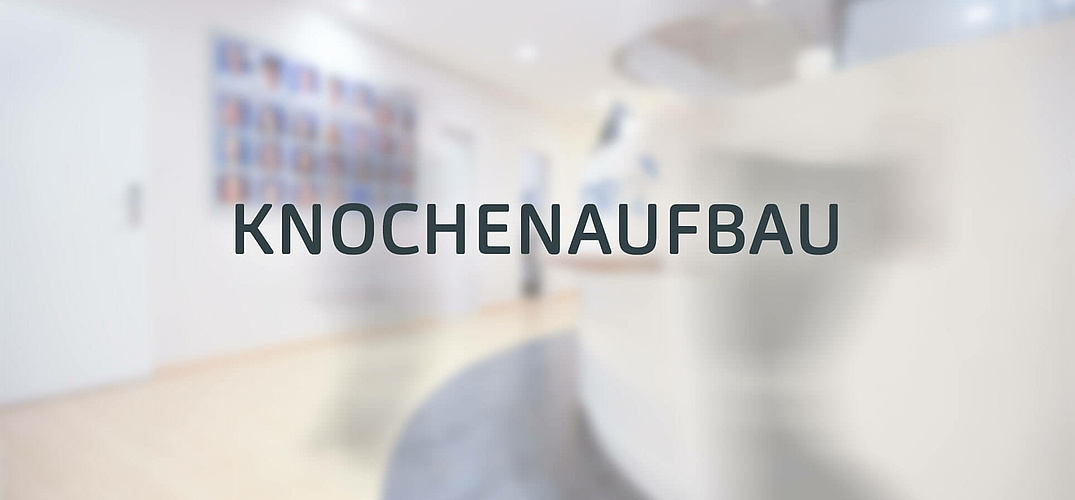Bone Generation
What is it?
Should the bone substance be insufficient to hold the implant, we must then generate bone in the corresponding place in your jaw. This means that the jawbone will be widened or raised, as required.
When is bone generation necessary?
It is clear before the implantation how much work must take place before the dental implants can be inserted. Thanks to the most modern methods of diagnosis, such as the Digital Volume Tomograph (DVT), an exact diagnosis and plan can be made before the treatment. Bone generation may be necessary because of missing bone width (lateral augmentation) and also because of a lack of bone depth (vertical augmentation).
How is bone generation carried out?
We use synthetic bone replacement materials and own bone in form of a block of bone or ground bone. In our dental practice in Mönchengladbach, we avail ourselves of several methods in the generation of jaw bone, in order to produce the prerequisites for a successful implantation.
In many cases, we use bone replacement material, so we can save the patient from having a second operation for the extraction of bone.
The following methods are used in Dr. Quantius’ practice:
Sinuslift (or Sinus floor elevation SBE)
Sinuslift is used in the upper jaw in the side teeth area if the bone material between the oral cavity and the maxillary sinus (sinus cavity) is insufficient for the safety of the implant. The jaw bone is raised through the insertion of bone or bone generation material in the floor of the maxillary sinus.
Membrane method
If small pieces of bone are missing following an inflammation at the inner or outer wall of the alveole, the problem can be solved by inserting bone replacement material. New bone is formed under the protection of the membrane. The gum is sewn in place on top of the membrane and a new layer of bone is formed.
Repositioning of the nerve
Should the course of the nerves in the lower jaw be unfavourable, it can lead to a restriction of the bone above the nerves, which in turn means that an implantation is not immediately possible. In a situation like this, we can reposition the nerves after a consultation with the patient, if desired. This makes it possible for us to insert the implant next to the nerve and to leave the lower jaw nerve untouched.

